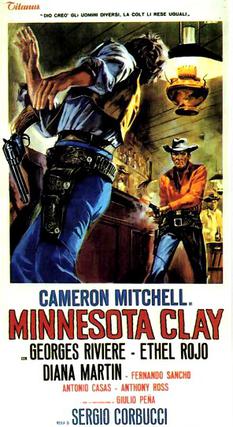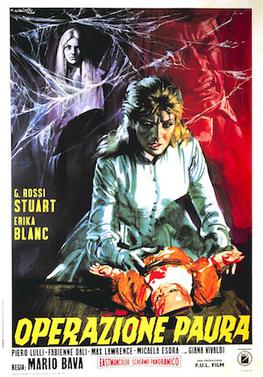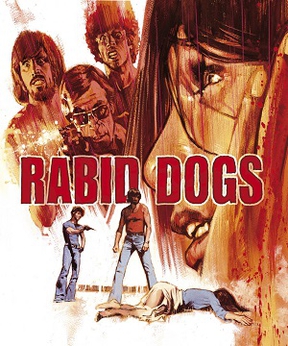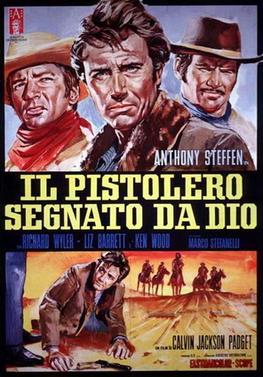
Mario Bava was an Italian filmmaker who worked variously as a director, cinematographer, special effects artist and screenwriter, frequently referred to as the "Master of Italian Horror" and the "Master of the Macabre". His low-budget genre films, known for their distinctive visual flair and stylish technical ingenuity, feature recurring themes and imagery concerning the conflict between illusion and reality, as well as the destructive capacity of human nature. He was a pioneer of Italian genre cinema, and is regarded as one of the most influential auteurs of the horror film genre.

Black Sabbath is a 1963 horror anthology film directed by Mario Bava. The film consists of three separate tales that are introduced by Boris Karloff. The order in which the stories are presented varies among the different versions in which the film has been released. In the original, Italian print, the first story, titled "The Telephone", involves Rosy who continually receives threatening telephone calls from an unseen stalker. The second is "The Wurdulak", where a man named Gorca (Karloff) returns to his family after claiming to have slain a Wurdulak, an undead creature who attacks those that it had once loved. The third story, "The Drop of Water", is centered on Helen Corey, a nurse who steals a ring from a corpse that is being prepared for burial and finds herself haunted by the ring's original owner after arriving home.

Blood and Black Lace is a 1964 giallo film directed by Mario Bava and starring Eva Bartok and Cameron Mitchell. The story concerns the brutal murders of a Roman fashion house's models, committed by a masked killer in a desperate attempt to obtain a scandal-revealing diary.

The Girl Who Knew Too Much is a 1963 Italian giallo film. Directed by Italian filmmaker Mario Bava, the film stars John Saxon as Dr. Marcello Bassi and Letícia Román as Nora Davis. The plot revolves around a young woman named Nora, who travels to Rome and witnesses a murder. The police and Dr. Bassi don't believe her since a corpse can't be found. Several more murders follow, tied to a decade-long string of killings of victims chosen in alphabetical order.

The Whip and the Body is a 1963 gothic horror film directed by Mario Bava under the alias "John M. Old". The film is about Kurt Menliff who is ostracized by his father for his relationship with a servant girl and her eventual suicide. He later returns to reclaim his title and his former fiancée Nevenka who is now his brother's wife. Menliff is later found murdered, but the locals believe his ghost has returned to haunt the castle for revenge.

Black Sunday is a 1960 Italian gothic horror film directed by Mario Bava in his official directorial debut, and starring Barbara Steele, John Richardson, Andrea Checchi, Ivo Garrani, Arturo Braga and Enrico Oliveri. Loosely based on Nikolai Gogol's short story "Viy", the film takes place in Moldavia and tells the story of a witch who is put to death by her brother, only to return two centuries later to seek revenge upon his descendants.

Danger: Diabolik is a 1968 action and crime film directed and co-written by Mario Bava, based on the Italian comic series Diabolik by Angela and Luciana Giussani. The film is about a criminal named Diabolik, who plans large-scale heists for his girlfriend Eva Kant. Diabolik is pursued by Inspector Ginko, who blackmails the gangster Ralph Valmont into catching Diabolik for him.

William Berger, also known as Bill Berger and Wilhelm Berger, born Wilhelm Thomas Berger was an American actor, mostly associated with Euro and spaghetti Westerns.

Minnesota Clay is a 1964 Spaghetti Western directed by Sergio Corbucci.
Antonio Rinaldi was an Italian cinematographer and camera operator. He worked exclusively for director Mario Bava on several films, including Planet of the Vampires (1965), Dr. Goldfoot and the Girl Bombs (1966), and Danger: Diabolik (1968).

The Day the Sky Exploded, released in the United Kingdom as Death Comes From Outer Space, is a 1958 French/Italian international co-production science fiction film. It is known as the first Italian science fiction film, predating even the science fiction films of Antonio Margheriti.

Five Dolls for an August Moon is a 1970 Italian giallo film directed by Mario Bava. It concerns a group of people who have gathered on a remote island for fun and relaxation. One of the guests is a chemist who has created a revolutionary new chemical process, and several of the attending industrialists are eager to buy it from him. Business problems become moot when someone begins killing off the attendees one by one.

Kill, Baby, Kill is a 1966 Italian gothic horror film directed by Mario Bava and starring Giacomo Rossi Stuart and Erika Blanc. Written by Bava, Romano Migliorini, and Roberto Natale, the film focuses on a small Carpathian village in the early 1900s that is being terrorized by the ghost of a murderous young girl.

Rabid Dogs is an Italian thriller-noir film directed by Mario Bava, starring Riccardo Cucciolla, Don Backy, Lea Lander, Maurice Poli, George Eastman and Erika Dario. Taking place largely in real time, the film follows a trio of payroll robbers who kidnap a young woman and force a man with a sick child to be their getaway driver, all while trying to avoid being caught by the police.

Rome Against Rome is a 1964 Italian peplum film directed by Giuseppe Vari.

Il pistolero segnato da Dio is a 1968 Italian Spaghetti Western film directed by Giorgio Ferroni and starring Anthony Steffen.

Knives of the Avenger is 1966 Italian film directed by Mario Bava. Bava entered production when it was already falling apart and re-wrote and shot the film in six days. It was credited to fictitious director John Hold.

The Road to Fort Alamo is a 1964 Spaghetti Western film directed by Mario Bava.

Savage Gringo is a 1966 Western film starring Ken Clark. The film is about a drifter who protects a rancher couple from a ruthless landowner. Under its Italian title, Savage Gringo was one of numerous Spaghetti Westerns retitled to take advantage of the success of Duccio Tessari's successful Ringo duology.

















